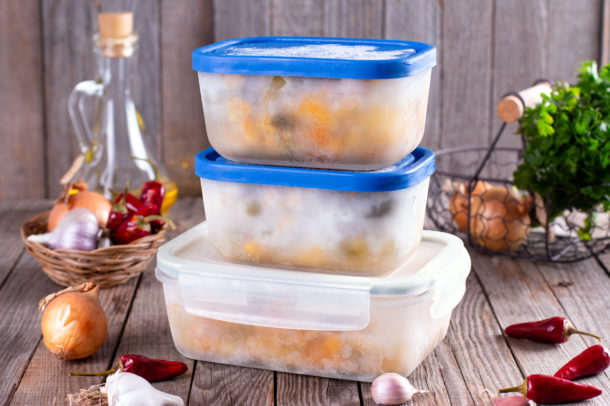Submitted by Hanna Kim, Dietetics Student & Dani Renouf, MSc, RD, CDE
Occasionally we purchase food that does not get eaten in time and then spoils. This usually happens when we buy too much all at once. At the household level, Canadians are throwing out more food than they realize – food that does not need to go to waste. Did you know that you can safely freeze most foods to extend their life so that they can be consumed at a later date? There are many different types of foods that can be frozen, whether it’s the extra loaf of bread you bought or the soup you want to have for lunch later in the week. And it’s simple! Just place the item in an air-tight container or a freezer bag to prevent freezer burn and label it. Most foods will last two to three months in the freezer.
A well-stocked freezer can help ensure you have everything you need to cook kidney-friendly meals. Avoid throwing away any leftovers and surplus food. Here are five freezing tips – all of which you can implement at home, doing your part to help prevent food waste.
- Save vegetable scraps. Vegetable peels and trimmings are great for creating a delicious low-sodium stock, which can be used for soups and sauces. Keep the scraps in a freezer bag and don’t forget to include the date on the label so you can keep track of when you froze the item.
- Did you know fresh fruit freezes very well? Choose low potassium fruits like berries and grapes that can easily be thrown into smoothies, yogurt parfaits, and salads.
- Vegetables are best blanched before freezing. Blanching is a process that involves partially cooking the vegetables in boiling water for a short period of time and then rapidly cooling them in cold water. This improves the colour and texture. Try freezing low potassium vegetables like green beans, carrots, and peas.
- Herbs can be frozen in an ice cube tray. Remove their thick stems and finely chop the leaves. Throw ~1 tbsp in each ice cube slot with a drizzle of olive oil. This is a great way to prevent food waste and also flavour your soups, stews, and pasta without added salt.
- Convenient, ready-to-eat, homemade meals. Portion out your meals in freezer-friendly bags or containers for a quick fix when you are hungry.
How do you use leftovers to help reduce food waste? Try this delicious Vegetable Chili recipe below, which freezes very nicely (if you have leftovers!).
